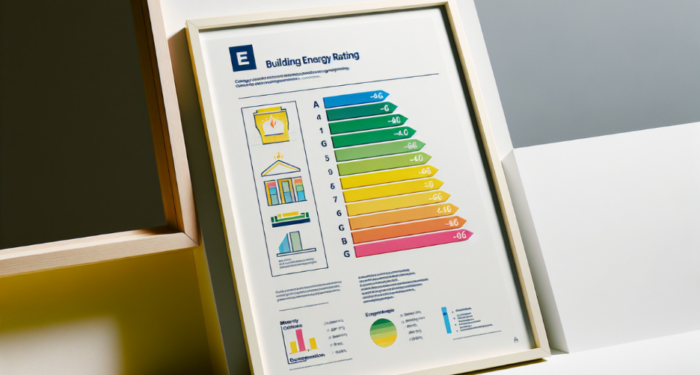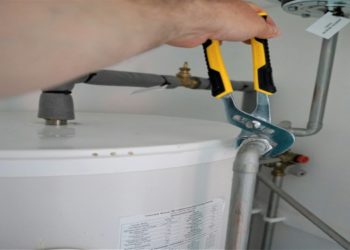Energy efficiency in the built environment is fast becoming a top priority for homeowners, landlords, and businesses alike. The Building Energy Rating (BER) Certification is a key standard designed to measure a building’s energy performance, guiding property owners towards more sustainable practices. By assessing and scoring the energy usage and carbon dioxide emissions of a building, the BER serves as a crucial indicator of a property’s environmental impact.
The path to achieving energy efficiency in buildings extends far beyond the mere reduction of utility bills. It encompasses the adoption of environmentally responsible measures that contribute significantly to the reduction of greenhouse gases. From the design phase to construction materials selection, every aspect of building development is scrutinized to ensure alignment with energy efficiency principles.
This article aims to provide a comprehensive guide on the journey to achieving BER Certification, covering the principal strategies involved in designing energy-efficient buildings, understanding the BER system and assessment process, and exploring the numerous benefits and incentives available to those who strive to make their properties more energy efficient. Let’s delve into the nuances of making buildings more energy efficient while exploring the intricate world of BER Cert.
Understanding Energy Efficiency in Construction
In the realm of construction, it’s essential to infuse energy efficiency principles from the groundwork of design. Architects and engineers employ various strategies to minimize energy demands, like optimizing the building’s orientation to leverage natural light, thereby reducing the need for artificial lighting. Such blueprints also focus on maximizing indoor thermal comfort without the excessive use of HVAC systems.
The incorporation of well-placed insulation, strategic ventilation, and the selection of building materials are central to an energy-efficient construction approach. Insulation plays a pivotal role in mitigating heat loss during colder months and inhibiting heat gain during warmer periods. Effective ventilation, on the other hand, is crucial for maintaining indoor air quality while minimizing energy loss.
Passive strategies such as utilizing building mass to store and release heat or designing overhangs that shield windows from the summer sun are timeless tactics that contribute to a building’s intrinsic energy efficiency. Active strategies, including the installation of solar panels, programmable thermostats, and energy-efficient appliances, further push the envelope in reducing a building’s carbon footprint. These principles, when intelligently integrated, pave the way for the creation of buildings that are not only functional and comfortable but also environmentally sustainable.
The Building Energy Rating (BER) System
The BER system is essentially a grading framework that provides a standardized evaluation of a building’s energy performance. It is akin to the labels seen on household appliances, helping prospective buyers or tenants gauge the energy efficiency before making a decision. Buildings are rated on a scale from “A” (very efficient) to “G” (very inefficient), with the rating reflecting the building’s energy use per square meter per year.
Interpreting BER ratings can be crucial for owners and occupants, as it provides insights into how much it might cost to heat and power the building. A higher rating not only promises lower energy costs but also indicates a reduced environmental impact. The ratings assist in making informed decisions about purchasing or renting a property and in identifying ways to improve its energy performance.
Compliance with BER certification is not optional for most buildings in the EU; it’s mandatory upon the construction, sale, or rent of a property. The regulatory background includes the Energy Performance of Buildings Directive (EPBD), and national regulations, which set out the requirements buildings must meet. Property owners need to be aware of these regulations and the potential penalties for non-compliance to avoid any legal consequences.
Preparing for BER Assessment
To commence the BER assessment procedure, property owners must gather the necessary documentation, including details about the building’s age, dimensions, and existing heating and electrical systems. Information about recent renovations or energy efficiency improvements is also critical for an accurate evaluation.
Undergoing a preliminary energy audit can provide valuable insight into a property’s current energy performance. This proactive measure enables owners to pinpoint areas with the most significant energy losses and take corrective action before applying for BER certification. Audit reports typically cover aspects such as insulation quality, window efficiency, and boiler performance.
Prior to certification, common areas that may require improvement include sealing drafts, upgrading insulation, installing energy-efficient lighting, and adopting state-of-the-art heating systems. Even seemingly minor adjustments, such as adding draught excluders or reflective radiator panels, can reflect positively on the final BER rating. Addressing these areas not only enhances the likelihood of achieving a favorable BER Cert but also contributes immediately to the reduction of energy consumption.
The BER Certification Process
To obtain a BER Certificate, one must go through a systematic process that is initiated by contacting a registered BER assessor. These professionals have met the necessary criteria to carry out assessments and possess the skill to effectively evaluate a building’s energy performance. The assessment involves a thorough examination of various factors including the building’s construction, its heating system efficiency, ventilation provision, and the presence of renewable energy technologies.
The role of certified BER assessors is to gather data from on-site inspections and enter it into the Sustainable Energy Authority of Ireland’s (SEAI) software, which computes the BER rating. They can also provide practical advice on how to boost a building’s energy efficiency. Following the assessment, the assessor issues a BER certificate along with an advisory report, which suggests measures to enhance the building’s energy performance.
Costs associated with obtaining a BER Certificate can vary depending on the size and complexity of the building and the measures needed to achieve compliance. While there are upfront expenses to attain the certification, property owners should consider it as a long-term investment that can lead to significant savings and benefits over time.
Benefits of BER Certification
There are overarching advantages to obtaining a BER Cert, which range from tangible financial gains to more intangible environmental contributions. In the long term, energy-efficient buildings invariably lead to cost savings due to reduced energy consumption. These savings are evident in lower utility bills, and when considered over the lifespan of a building, they can amount to a substantial financial reserve.
BER Certification can lead to a marked increase in property value and marketability. In an increasingly environment-conscious market, energy efficiency is becoming a significant determinant in a buyer’s decision-making process. A high BER rating can make a property stand out to eco-minded purchasers, possibly leading to quicker sales at more competitive prices.
The environmental aspect of BER Certification cannot be overstated. By reducing energy consumption, certified buildings contribute significantly to the reduction of greenhouse gas emissions. This contribution is crucial in the fight against climate change and in promoting sustainability. Adopting energy-efficient measures in buildings is no longer an option but a responsibility for a sustainable future.
Case Studies: Success Stories in Energy Efficiency
Residential BER Certification achievements have been numerous and serve as inspirations for homeowners looking to improve their energy efficiency. Success stories often feature comprehensive retrofits, including insulation upgrades and solar panel installations, which lead to transformative improvements in ratings and energy savings.
In the commercial sector, building energy efficiency improvements not only reduce operational costs but also exemplify corporate responsibility. Companies that have invested in energy-saving measures often report a positive impact on brand image and employee satisfaction, as well as guessable returns on investment through energy costs reduction.
Government and public sector initiatives have also demonstrated the viability of achieving high BER ratings in larger scale infrastructures. Public buildings such as schools and community centers have undergone extensive renovations to improve energy performance, setting an example and raising public awareness regarding the importance of energy efficiency.
Financial Incentives and Support for Energy Efficiency
Recognizing the benefits of energy efficiency, governments have introduced a variety of grants and subsidies to encourage property upgrades. These financial supports often cover a portion of the costs incurred for energy efficiency improvements, such as installing insulation or high-efficiency boilers.
Tax incentives are additional tools to make the transition to energy-efficient buildings more feasible. Governments may offer tax credits or deductions for both residential and commercial properties that meet certain energy efficiency criteria. This not only offsets the initial costs but also signifies governmental commitment to reducing energy consumption on a national scale.
For those undertaking mightier energy efficiency projects, various financing options are available. These may include green loans with favorable interest rates or energy-saving agreements with service providers. These financial products are specifically designed to facilitate investments in energy efficiency, making it more accessible for a broader range of property owners.
Challenges and Considerations in Pursuing BER Certification
On the road to energy efficiency, property owners often face obstacles that can hinder progress. One major challenge involves the initial cost outlay required for substantial renovations or the installation of high-efficiency systems. However, considering the long-term energy cost savings and potential increases in property value, these initial expenditures can be justified.
Heritage and older buildings present a unique set of challenges due to their design constraints and historical value. Retrofits must be sensitive to the original architecture, sometimes making it more complicated and costly to implement modern energy-saving solutions. However, tailored approaches that respect the building’s integrity while enhancing energy efficiency are possible and increasingly common.
Balancing cost considerations with long-term benefits requires a forward-thinking perspective. Property owners need to evaluate the return on investment not just in financial terms but also in terms of ecological impact and contribution to a sustainable future. It’s a strategic investment that requires careful planning and, often, a willingness to pioneer new solutions.
The Future of Building Energy Efficiency and BER Certification
As technology continues to advance, so too do the opportunities for improving building energy efficiency. Innovations such as smart building systems that optimize energy use in real-time and next-generation materials with higher insulative properties are set to revolutionize the industry. These developments will likely lead to stricter BER standards and an increased emphasis on cutting-edge energy efficiency measures.
Policy changes also play a critical role in shaping the future of BER Certification. Governments may introduce new regulations that require higher levels of energy efficiency or provide additional incentives for property owners to upgrade their buildings. These policies will impact the construction industry, prompting a paradigm shift towards sustainability and responsibility.
The growing importance of sustainable building practices cannot be overstated. As the global community becomes more aware of the urgent need to reduce energy consumption and combat climate change, green buildings will likely become the standard rather than the exception. BER Certification will continue to be a vital tool in promoting these practices and achieving environmental sustainability targets.
Conclusion: Summarizing the Importance of BER Certification in Promoting Energy Efficiency and Sustainability in the Built Environment.
BER Certification is more than a mere rating; it symbolizes a commitment to energy efficiency, environmental responsibility, and forward-thinking investment in the built environment. While the journey towards achieving BER Cert can present its challenges, the multitude of benefits—from reduced energy costs to increased property value and ecological stewardship—more than justify the effort.
As the world faces the reality of finite resources and climate change, the importance of energy efficiency becomes unequivocal. BER Certification and the practices it encourages are pivotal in guiding homeowners, businesses, and public entities to a more sustainable and less energy-intensive future. By prioritizing the implementation of energy-efficient measures today, we pave the way for a greener, more resilient tomorrow.
The roadmap to a more energy-efficient and sustainable building landscape is clear, and BER Certification is the compass guiding the industry. Property owners, governments, and all stakeholders involved in the built environment have a role to play. Together, harnessing technology, embracing supportive policies, and upholding the principles of sustainability, we can make the vision of a more energy-efficient world a tangible reality













































































